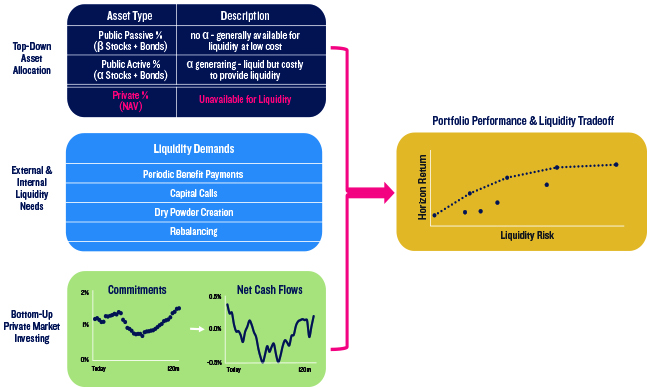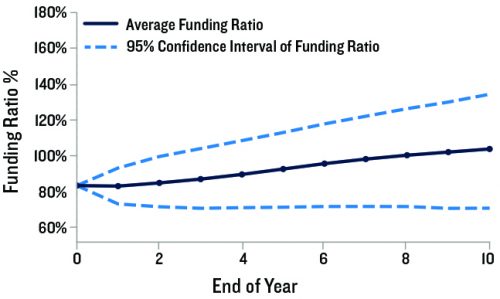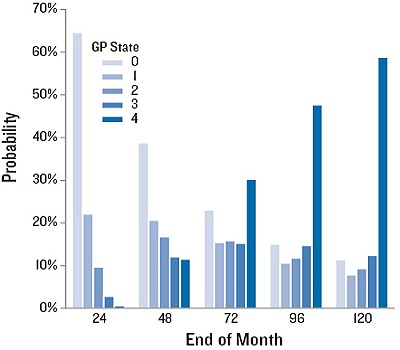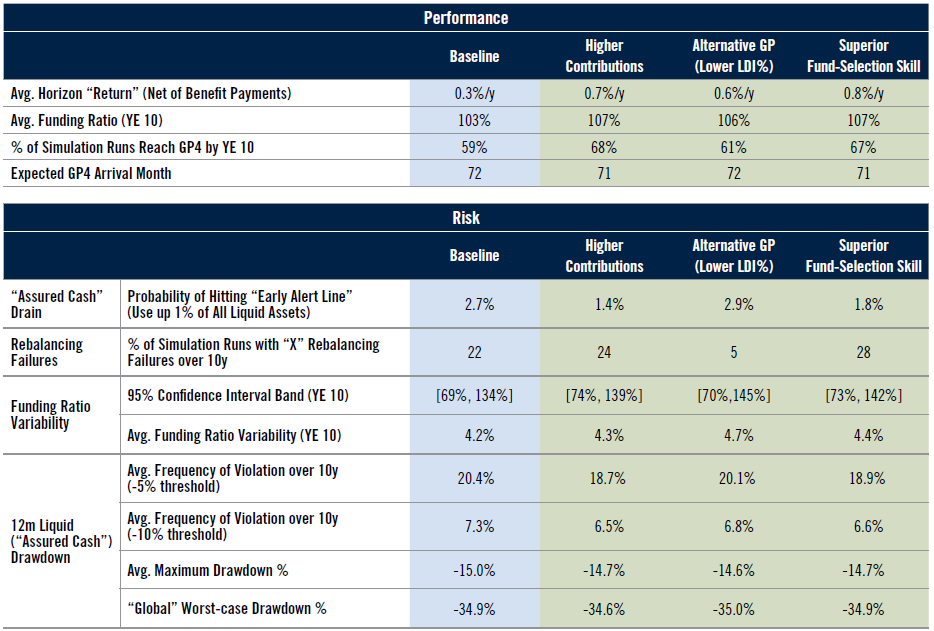Institutional portfolios such as corporate pension plans are increasing allocations to illiquid private assets seeking better returns and diversification. However, as allocations increase, a portfolio’s liquidity structure changes, sometimes abruptly. How can a CIO increase their confidence with private asset allocations and unlock their potential?
For asset allocators, liquidity risk is one of the most critical, but least quantified, risk dimensions in portfolio construction. For example, corporate defined benefit (DB) plans have many unexpected liquidity demands, besides scheduled benefit payments, which should be accounted for when evaluating liquidity risk. A plan should be able to rebalance when market movements cause allocations to exceed risk limits. A plan also needs liquidity to meet unexpected capital calls and to be prepared for exogenous cash flow events driven by corporate actions (e.g., pension risk transfers, corporate contributions, and merger and acquisition activities). Many plans also have asset allocation glide paths, conditional on the plan’s funding ratio, that may present additional liquidity strains as it could be difficult to sell private assets to satisfy new allocation targets.
Using a corporate defined benefit pension plan as our example, we present and illustrate a practical cash flow-driven asset allocation framework (OASIS™ – Optimal Asset Allocation with Illiquid Assets) that consistently models private asset cash flows together with expected public asset returns and risk that drive the portfolio construction process. OASIS can help CIOs analyze how their top-down asset allocation and their bottom-up private investing activity interact to affect their portfolio’s ability to respond to liquidity demands in a multi-asset, multi-period setting.
Figure 1: Oasis Structure

Source: GIC TPS & PGIM IAS. Provided for illustrative purposes only.
We also illustrate how a CIO can use OASIS to determine their portfolio’s expected tradeoff between performance and various risks such as funding ratio variability, glide path changes, corporate actions and sustained liquidity drawdowns.
For example, given a DB plan’s baseline glide path (GP) asset allocation (with increasing LDI as the funding ratio improves), liability and corporate contribution schedules, and public assets capital market assumptions, OASIS shows the CIO how the funding ratio evolves over time (Figure 2). In addition, OASIS can tell the CIO when to expect the plan to be fully funded – and how the portfolio migrates across the GP states over the investment horizon (Figure 3).
Figure 2: Expected Funding Ratio

Source: GIC TPS & PGIM IAS. Provided for illustrative purposes only.
Figure 3: Distribution of Glide State Paths

Source: GIC TPS & PGIM IAS. Provided for illustrative purposes only.
We consider three “what-if” scenarios: 1) an alternative corporate plan glide path that more gradually increases LDI; 2) higher contributions from the corporate sponsor; and 3) superior private equity CIO fund-selection skill. Figure 4 summarizes the tradeoffs between raising the funding ratio, increasing portfolio performance, minimizing portfolio liquidity and drawdown risk. Quantifying these tradeoffs can help CIOs make investment decisions on asset allocation, private asset commitment strategy and glide path design.
Figure 4: What-if Summary

Source: GIC TPS & PGIM IAS. Provided for illustrative purposes only.
For the full research paper, click on “Save As PDF”.






